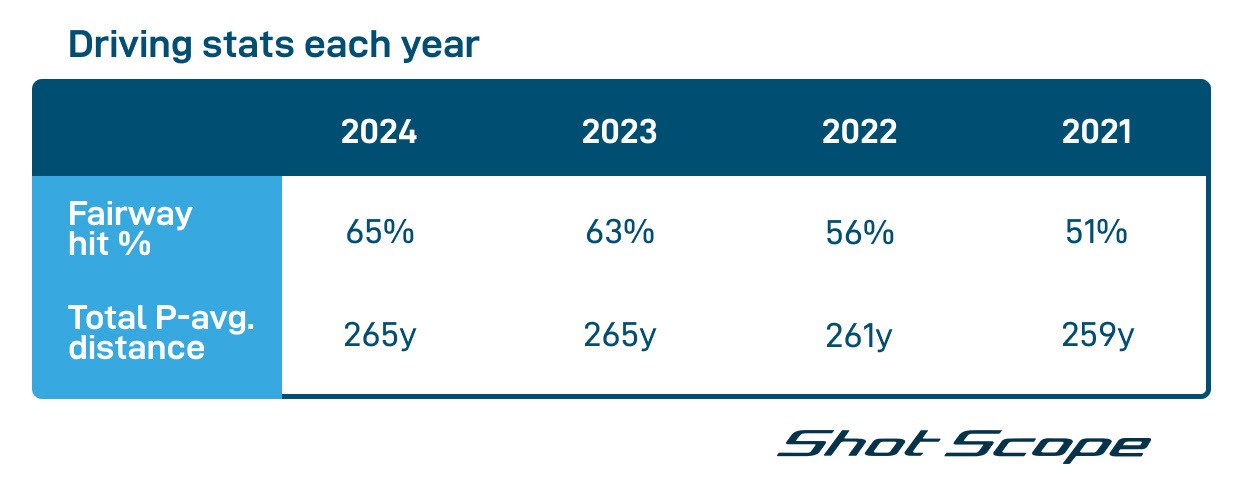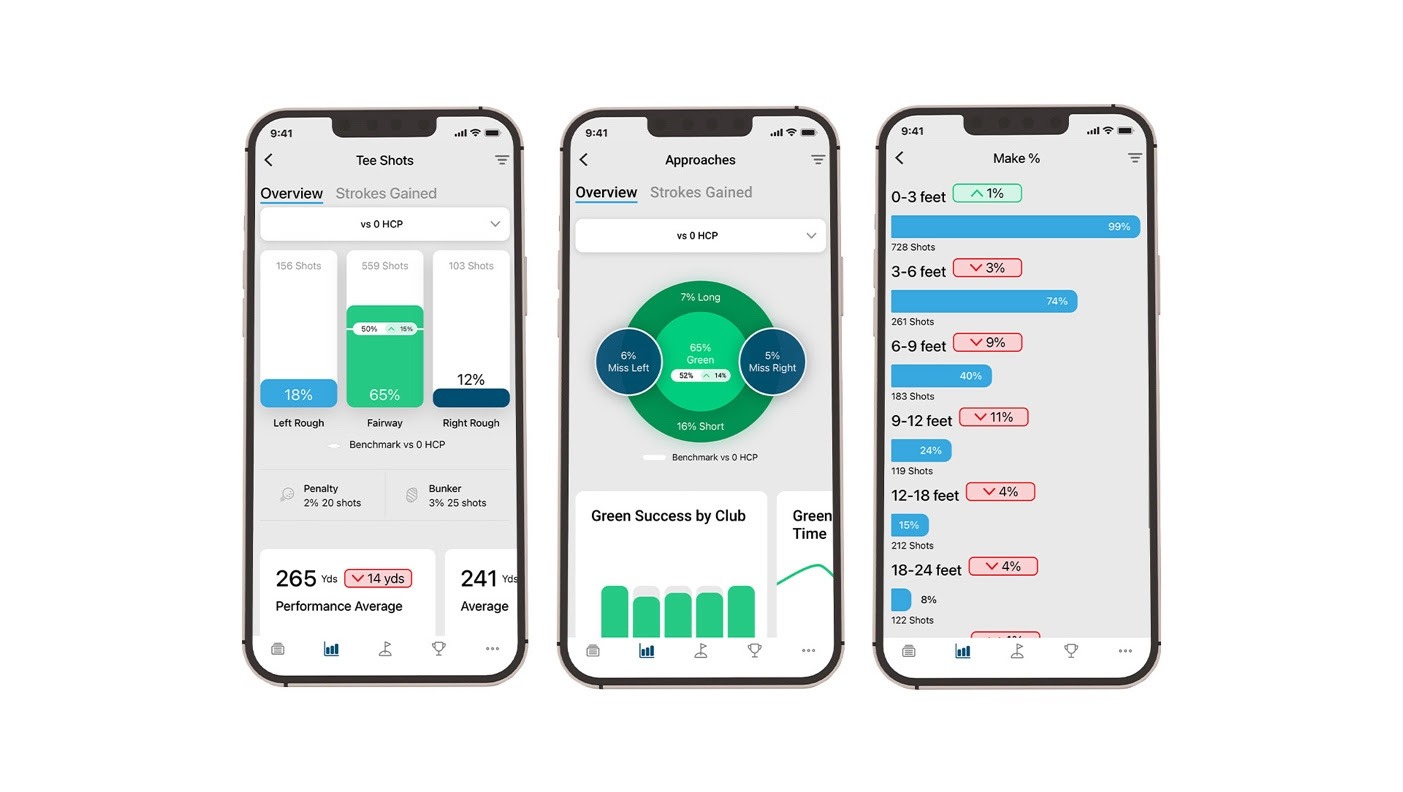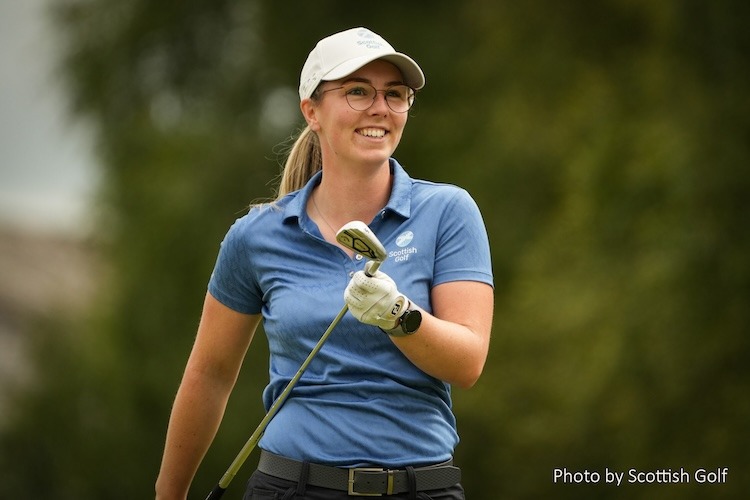For every golfer who takes the game seriously, the same six letters loom ominously, and almost constantly, over our heads when we think about our on-course performance. In a sport in which “perfect” simply doesn’t exist, it’s the pursuit of B-E-T-T-E-R that has us all obsessed. “How much practice will I need to put in to be three shots better?” “How many lessons until this swing change makes me better?” “If I add 10 yards to my drives, will my scores be better?”
The questions and the pursuit never stop.
The legendary Ben Hogan famously insisted those answers must be dug “out of the dirt,” but with today’s technology, like Shot Scope’s performance-tracking handhelds, laser rangefinders and GPS watches, every shot a golfer hits can illuminate the roadmap to game improvement. By tracking your shots, you’re enabling Shot Scope to analyze your game the way an MRI leaves nothing to chance with its precision scanning. If there’s a trend or weakness in your game, you can find it and work on it.
Jennifer Saxton, Shot Scope’s marketing manager, has always excelled as a golfer. She became a scratch player during her university years while earning a Marketing and Sports Studies degree at the University of Stirling. For the past six years, she’s been working with influencers, industry partners, and golf media to help maximize brand reach and promote Shot Scope’s innovative products and services. And, she’s been improving her game by learning from the Shot Scope’s performance-tracking tools and focusing on the aspects that need the most work.
Today, Saxton is +5 handicap, is the 376th-ranked woman in the World Amateur Golf Ranking, the ninth-ranked female Mid-Amatuer player in the world, a member of Scotland’s national ladies’ team and the 2022 champion of the prestigious St Rule Trophy, played at the Old Course at St. Andrews. Ask any teacher or playing professional what the hardest leap to make as an improving golfer is, and they will tell you it’s the jump from scratch to plus. So, how has Saxton achieved one of the toughest accomplishments in the game? It starts with data and leads to a plan. The rest is hard work.
Saxton’s most recent achievement is qualifying for Team Europe in the 2024 Concession Cup Match presented by Golf Genius, which will be hosted by The Landings Golf & Athletic Club in Savannah, Georgia on November 4 – 8 and feature both men’s and women’s matches pitting Team USA vs. Team Europe.
“This is an exciting honor,” Saxton said. “I have represented Scotland for the last 3 years but to step up and play for not just Scotland, but Europe is an opportunity I am really looking forward to. I am delighted that women have been included for the first time. The awareness around women’s golf is growing and there are more and more opportunities becoming available to us. The inclusion of women at the 2024 Concession Cup gives those of us who have maybe elected not to play professionally but instead work and continue to play golf the opportunity to still compete at a high level as well. As a team, we are hoping to be the first ones to get our name on that trophy and be in the history books forever.”
Saxton was an early adopter to performance tracking and has been using her stats to better her practice and on-course performance for the last 10 years, the last six of those through Shot Scope’s automatic tracking system. “The change to Shot Scope meant it was faster and easier to track my performance without having to manually input my stats after a round,” she says. “The biggest thing I have taken from tracking my game is managing expectations, which has really helped with my mindset on the course. It has helped me set realistic expectations for myself around shots. For example, I would quite often get annoyed because I didn’t hit a chip shot to within 3ft, but in reality, my average is 10ft, so anything inside that is above average.”
Working inside the walls at Shot Scope and feeding off the energy of the data day-after-day has helped her make better decisions, too. For example, she knows what the percentage shots are. She now hits driver off the tee wherever possible because the closer she is to the green, the closer she will hit her approach. She also doesn’t lay back on par 5s and has seen her scores improve. That’s the power of data.
Some of Saxton’s findings about her game have been unexpected. “To be honest, I thought I was quite a good putter, but, unfortunately, I am not as good as I thought. Over the last couple of years my stats around six- to 12-ft putts have been poor,” she explains. “The data highlighted that I needed to improve my putting, and more specifically, 6-9ft and 9-12ft was revealing. Working with my coach, we identified a few setup tweaks to be made, and when I practice, I always do the same maintenance drills to try and improve this.”
Individual parts of Saxton’s game are improving by following the data she finds in her Shot Scope analytics.
“A few years ago I had a bit of a costly miss off the tee that often resulted in bogeys and doubles. So I made some changes with my driver (technique and, more recently, a new driver) and have seen my Fairway Hit Percentages go from 51 percent in 2021 to 65 percent in 2024.

Winning the St Rule Trophy in 2022 on the famed Old Course at St. Andrews is simply the stuff of dreams and one of Saxton’s proudest achievements. Closing out the 54-hole event was even more special because the grandstands were up in preparation for the 150th Open Championship.
“In the lead up to the event I had been working on an e-book ‘The Ultimate Guide to St. Andrews: How amateur golfers perform around the Old Course,’” Saxton explains. “This meant I was looking at the Old Course nearly every day for months, learning all the stats and everything there was to know about the course. Now, yes I had been fortunate enough to have played the course many times before, but I genuinely believe this project at work directly impacted my performance on the Old Course. I felt as though I knew exactly where I could and couldn’t hit it. It wasn’t a perfect performance; I had my issues on the Par 3 11th hole – but that’s golf for you. It is a round of golf and a tournament I will always remember.”
Saxton plays at an elite level, no doubt, but the things she has learned and applied to improve her game can be applied to anyone’s game and pursuit of shooting lower scores.
“For a golfer who has just decided to start tracking data it might seem daunting, however Shot Scope makes it easy to learn some key things about your game. For the majority of golfers, learning how far they hit their clubs on the course makes a huge difference. In general, the stats highlight that amateur golfers come up short 50 percent of the time (on approach shots). Hitting more club or playing to the back of the green yardage are two ways we have seen amateur golfers improve quickly without changing their swing,” Saxton advises. “Tracking data doesn’t have to be complicated. You can keep it as simple as you like with Shot Scope. But if you’re like me, the more you play and dive into the stats, the more you want to look at your progress.”
The bigger challenge for golfers is just starting to track their shots and making it a regular habit, but with a little effort and consistency, you can start to see some fascinating trends and numbers that will motivate you to practice more.
“My best advice is track every time you play. Don’t just track competition rounds, or good rounds, track them all. You can always filter out rounds you don’t want to look at in your stats. Once you’ve tracked enough rounds, it becomes part of your game, you don’t even have to think about it,” Saxton adds. “If you’re working with a teacher on a regular basis, encourage them to track your progress using The Shot Scope Academy in Shot Scope. It gives a coach full access to a student’s account, meaning they can see exactly what the student sees and view every round with statistics. They will be able to pinpoint exactly where you should be focusing in order to improve.”
From a coach’s perspective, having multiple students using Shot Scope means they can quickly and easily compare students against one another, as well as comparing any students’ statistics versus the Shot Scope Handicap benchmarks. This can help the coach set goals and targets for the student going forward.

“My coach uses Shot Scope Academy to view my stats,” Saxton said. “She recently moved to America, so it allows her to keep an eye on what I am doing on the course from afar. Generally, we review in more detail at the end of the season and develop a plan for the winter and off-season for me to work on.”
If you would like to learn more about how performance tracking with Shot Scope can help your game and guide you to significant improvement on the course, visit shotscope.com
















